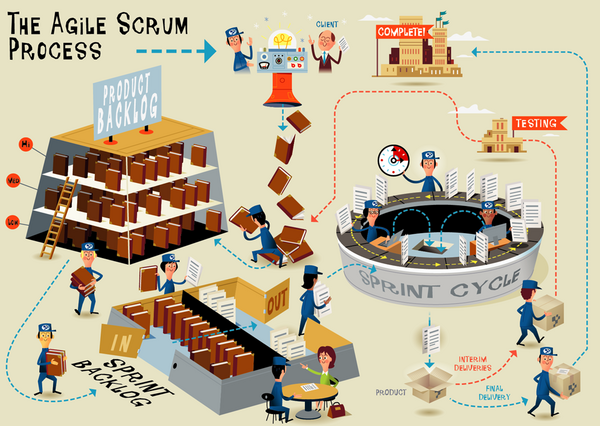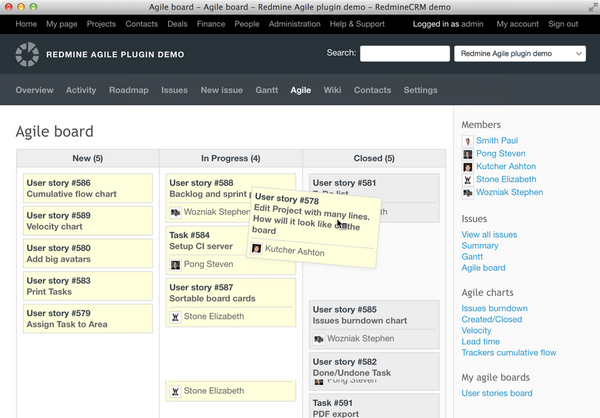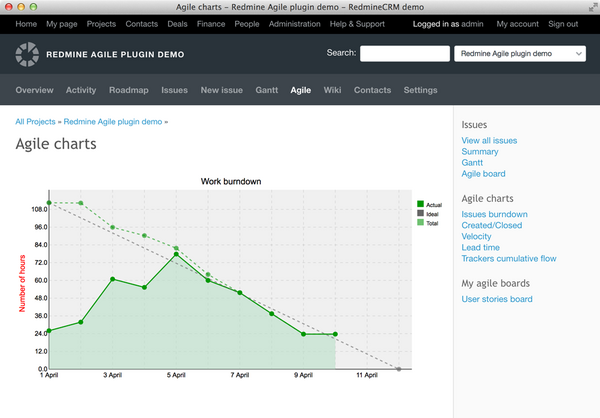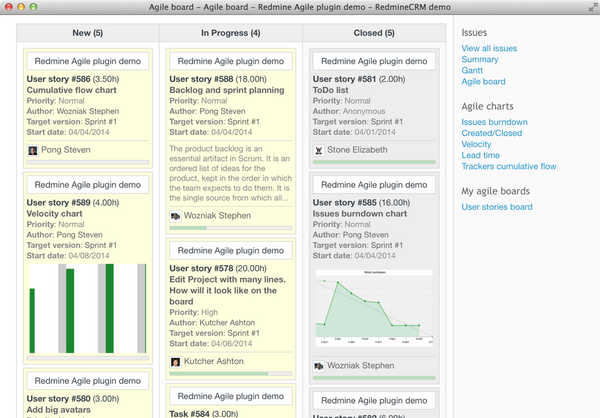Are you still racking your brain on how to increase productivity and accomplish business goals without unnecessary stress? Then this guide is for you! .
Today we will get acquainted with a tremendous breakthrough in the project management sphere known as Agile sprints. After you give the sprint methodology a chance, trust us, things will never be the same. Let’s embark on an exciting journey prepared by RedmineUP, shall we?
With the help of this material you will learn:
- Sprint Meaning in Agile: Basics
- Agile Sprint Cycle
- Agile Sprint Artifacts
- How to Make a Right Agile Sprint Planning?
- How to Create Your Sprint in Redmine
Sprint Meaning in Agile: Basics

A sprint is a period of time in which a team solves a specific task or group of tasks as part of a larger project. It is a core element of such Agile methodology as Scrum, aimed at delivering a viable product to market as quickly as possible. Therefore, if a project requires great effort, the sprint methodology suggests grouping it into a number of smaller steps or, put another way, sprints.
Meanwhile, tasks or sub-tasks are assigned to team members. For software development teams, for example, an Agile sprint may include bug fixes, issues or features that need to be added in the next product release. Moreover, all the workflow is visualized on a Scrum board. It makes projects significantly more illustrative and manageable, as Scrum sprints empower teams with a so-called gut feeling about any project changes or issues. This higher sensitivity enables them to react way faster, thereby decreasing the time needed for shipping a product.
Again, any project becomes the logical outcome of several sprints, sometimes called iterations, with their own workload determined by a team manager. Each sprint ends with an increment, i. e. an intermediate result (operable or not) that a team plans in advance.
Pay attention: evaluating your team’s strength sensibly is a key to success!
Migrate to secure hosting
Don't waste your time on Redmine maintenance. Hire experts and focus on your projects
Agile Sprint Cycle
Often referred to as a notion of continuous development, any Scrum cycle consists of five stages:
- Sprint Planning is a cornerstone of any fruitful Agile sprint. In this phase, a team is discussing what should be done and which human resources should be selected for an effective work performance.
- Daily Scrum is a 15-minute team event, during which the team members share their intermediate results, as well as raise their concerns to make a collective decision, kind of a crowdsource.
- Sprint Review is a harvest of what was accomplished. The team is evaluating their results and reflecting on what can have been improved. At the same time, collaborators are deciding what to do during the next sprint.
- Sprint Retrospective is another highly important team event when the team members are trying to identify how to optimize the next Agile sprint with a meticulous review of what strong and weak sides the latter sprint had.
- Sprint Itself as a collective event of four above-mentioned events.

Agile Sprint Artifacts
Agile artifacts represent the information of value used by a team to achieve business objectives. They are designed to increase project transparency, one of the main components in Agile methodology.
1) Product Backlog
The full list of new features, bug fixes, improvements and work requirements needed to complete a product. It is based on information obtained from different sources, like customer support, market demand studies and sales opportunities analysis. As everything in Agile, it is very flexible which means that the set is constantly updated in accordance with the relevant data and consumer request.
2) Sprint Backlog
Then goes a set of tasks selected for a current sprint. The more the sprint is learned, the more its sprint backlog is updated. If a team does not have enough resources to complete all the sprint assignments, the uncompleted ones will remain in the sprint backlog until the next sprint.
3) Increment
It is a grain of our sandcastle called Product. Each completed task is summed up to all the previous ones.
How to Make a Right Agile Sprint Planning?
Now let’s dive into sprint planning and its peculiarities to deliver your project with flying colors.

First of all, you should define an agreed Sprint Goal, that is how your product can benefit from a current Agile sprint, how its value can be increased.
Second, you need to shape a healthy evaluation of your team’s ability. Your Sprint Goal breaks down into specific tasks placed in the Backlog. The backlog is a project plan: for instance, each new task is given the status “In Progress”, and when the task is completed, the status changes to “Done”. Thus, it is crucial to select which tasks are necessary to assign right now and which can be postponed until the next sprint.
And last but not the least, after choosing a prioritized set of backlog items you are planning the necessary work to create an Increment of value that meets your Sprint Goal. This includes finding a suitable person in charge, the one who will handle this job the best way possible.
Making backlog items achievable is of utmost importance, since it enables your team to stay motivated and not afraid of overwhelming tasks. By the way, our Agile plugin comes with a built-in Sprint planner that significantly simplifies this step. By using drag and drop you are able to rearrange issues in one click. What is more, you can see all the tasks, the general backlog and the current sprint as well as the total time score at the same time.
How to Create Your Sprint in Redmine
We are thrilled to present you a RedmineUP guide on how to create your custom Agile Sprint on the platform that is considered to be one of the best all-in-one PM tools with open code:
Migrate to secure hosting
Don't waste your time on Redmine maintenance. Hire experts and focus on your projects
1. Create a Backlog
Go to project setting and find the tab Versions. Choose important issues for your project at a given moment, give each task a particular rank and estimation (time in hours to track the progress; story points to estimate a task) and move them to the backlog column in Version planning.
2. Plan a Sprint
Select top-priority issues from the backlog column and move them to the sprint column. Then click on New Sprint and give some details to it (status, start and end dates, etc).
3. Go to an Agile board
Now you can see your sprint with all the details on a custom Agile board. Just go to the tab Agile. The cards with issues represent the user stories. In the default version, each issue is assigned to the following categories: Task, User Story or Bug. However, it is possible to customize them as you wish. Just add everything you find appropriate for your business.

See? It is a piece of cake!
We advise you to have a hand in the Agile Sprint methodology. Do it today, for which you will say "thank you" tomorrow. Incorporate Agile Sprints into your daily business routine. You can find more information in our Help Section or jump straight to action with the RedmineUP exclusive FREE trial.
Have you ever tried Agile sprints? Share your story in the comments!


